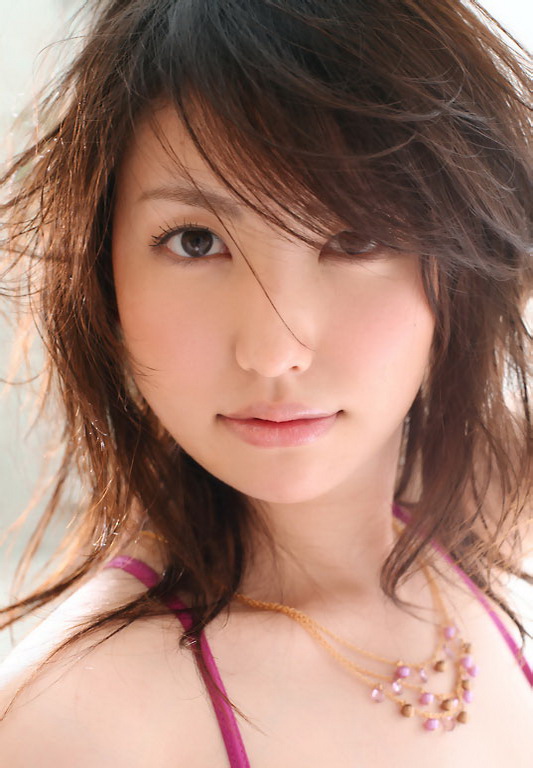Asian hairstyles are a vibrant reflection of the diverse cultures and traditions found across Asia. From the sleek bob of modern urban youth to the intricate braids and buns of traditional ceremonies, these hairstyles embody a rich tapestry of history, identity, and personal expression. Each style tells a story, often intertwined with cultural significance, making them not just mere trends but a celebration of heritage.
In recent years, the beauty industry has seen a significant rise in the popularity of Asian hairstyles, influencing global trends and inspiring many to explore these unique looks. With the increasing visibility of Asian culture through media, fashion, and social networks, individuals are embracing these styles as a form of self-expression while celebrating their roots. Whether it's the edgy layers of a K-Pop star or the elegance of a traditional Japanese updo, there's a hairstyle for everyone to admire and replicate.
As we delve deeper into the world of Asian hairstyles, we'll explore various styles, their cultural significance, and tips on how to achieve these looks. This article aims to celebrate the beauty of diversity in hairstyles and encourage readers to experiment with their hair, drawing inspiration from the vibrant traditions of Asia.
What Are the Most Popular Asian Hairstyles?
Asian hairstyles come in a variety of forms, suitable for different occasions and personal styles. Some popular hairstyles include:
- Sleek Bobs
- Long Layered Cuts
- Traditional Buns
- Intricate Braids
- Korean Wave Hairstyles
- Japanese Geisha Styles
- Chinese Top Knots
- Modern Shaggy Cuts
How to Achieve a Popular Japanese Hairstyle?
Achieving a popular Japanese hairstyle often involves specific techniques and products. Here’s a guide to get you started:
- Consult a Professional: If you’re aiming for a specific Japanese hairstyle, it’s best to consult a stylist who specializes in Asian hair.
- Prepping Your Hair: Start with clean, dry hair. Use a good conditioner to keep your hair healthy and manageable.
- Use the Right Tools: Invest in quality styling tools like straighteners, curling wands, and brushes designed for Asian hair textures.
- Style with Products: Use styling products such as serum, mousse, or hairspray to hold your hairstyle in place.
What Are Traditional Asian Hairstyles?
Traditional hairstyles often hold cultural significance and are tied to specific ceremonies and events. Some notable examples include:
- Korean Hanbok Updo: Typically worn during traditional ceremonies, featuring intricate twists and decorative pins.
- Chinese Empress Hairstyles: Often elaborate, with multiple loops and adorned with flowers and jewels.
- Japanese Shimada: A stunning updo that is both elegant and formal, commonly seen in weddings.
How Do Modern Asian Hairstyles Differ from Traditional Styles?
Modern Asian hairstyles tend to emphasize individuality and often incorporate Western influences. Here’s how they differ:
- Customization: Modern hairstyles allow for more personal expression with varied cuts, colors, and textures.
- Trendy Influences: Styles are often influenced by global trends, such as the messy bun or beachy waves.
- Casual Aesthetics: More relaxed and informal styles are becoming mainstream, contrasting with the rigid structure of traditional hairstyles.
Who Are the Influential Figures in Asian Hairstyling?
Many celebrities and influencers have made significant impacts on the popularity of Asian hairstyles. One such figure is:
| Name | Occupation | Notable Hairstyle | Influence |
|---|---|---|---|
| Lisa Manoban | Singer, Dancer | Short Bob with Highlights | Popularized various edgy and trendy hairstyles among fans. |
What Can We Learn from Lisa Manoban's Hairstyle Choices?
Lisa Manoban, a member of the globally renowned group BLACKPINK, showcases a variety of hairstyles that reflect both her personality and cultural background. Here are some lessons we can learn from her choices:
- Confidence is Key: Lisa’s bold hairstyles encourage individuals to be confident in their choices.
- Experimentation: Trying different styles can lead to discovering what suits you best.
- Cultural Heritage: Embracing one’s roots while blending in modern trends creates a unique aesthetic.
What Hair Care Tips Should You Follow for Asian Hair?
Taking care of Asian hair requires a tailored approach. Here are some essential tips:
- Use Sulfate-Free Shampoo: This helps maintain moisture and prevents damage.
- Deep Conditioning: Regularly deep condition your hair to keep it healthy and shiny.
- Avoid Heat Damage: Limit the use of heat styling tools and always apply a heat protectant.
- Regular Trims: Keep your hair healthy by trimming split ends every 6-8 weeks.
How Can You Incorporate Asian Hairstyles into Your Look?
Incorporating Asian hairstyles into your look can be a fun way to experiment with new styles. Here are some ideas:
- Find Inspiration: Look through magazines, social media, and online platforms for ideas.
- Adapt to Your Style: Modify a hairstyle to better fit your personal style and hair texture.
- Practice Makes Perfect: Don’t hesitate to practice new styles at home to gain confidence.
Conclusion: Embracing the Beauty of Asian Hairstyles
Asian hairstyles are more than just trends; they are a celebration of culture, heritage, and personal expression. By exploring various styles, learning about their significance, and incorporating them into our lives, we can appreciate the beauty and diversity of Asian hairstyles. Whether you choose a traditional look or a modern twist, the key is to embrace your individuality and enjoy experimenting with your hair.
Capturing The Essence Of Love: A Journey Through Love Images
Unveiling The Hodgetwins: The Dynamic Duo Of Entertainment
Celebrating The Diversity Of Large Actresses In Hollywood


